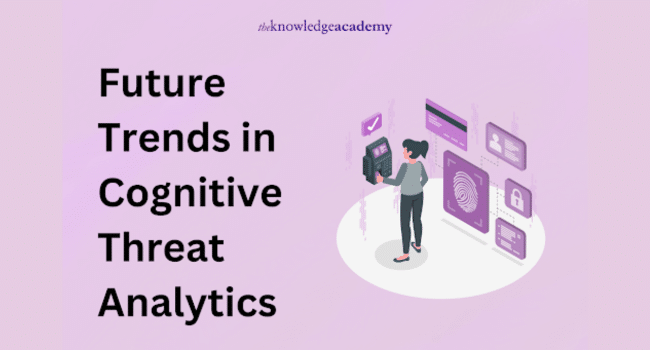Table of Contents
Cybersecurity experts have to keep ahead of ever complex risks in the fast changing digital terrain of today. Cognitive Threat Analytics, a sophisticated method using artificial intelligence and machine learning to identify and reduce cyber threats, is one potent weapon in this battle. Combined with a Cisco Certification, learning this discipline will greatly advance your career. This accreditation not only confirms your abilities but also creates access to advanced cybersecurity positions. You will learn how this innovative technology is changing the cybersecurity scene and why it is vital for remaining safe as we investigate the upcoming trends in cognitive threat analytics.
Integration of Advanced AI and Machine Learning Models
Integration of more sophisticated artificial intelligence and machine learning models will greatly impact cognitive threat analytics moving forward. Greater precision in threat identification and prediction will be provided by these technologies as they develop.
Deep learning and neural networks will become increasingly common tools since they will allow systems to learn from large databases and identify invisible complicated patterns. Not only will this speed up and improve the accuracy of threat identification, but it will also cut down on false positives, which have been a problem in cybersecurity for a long time.
Increased Use of Behavioural Analytics
A big part of the future of cognitive threat analytics will be behavioural analytics, which looks at how people and things in a network behave. Understanding usual behaviour patterns helps CTA systems find abnormalities more precisely, suggesting a possible hazard.
This method is especially helpful for detecting insider threats and advanced persistent threats (APTs), which sometimes go undetectable with conventional security systems. As they become more complex behavioural analytics will offer a better understanding of threat actors and their strategies, approaches, and techniques (TTPs).
Greater Emphasis on Threat Intelligence Sharing
Sharing threat information between businesses, industries, and even countries will become more important in the future of cognitive threat analytics. By offering a larger view of developing hazards and attack paths, cooperative efforts in sharing threat intelligence will improve the general efficacy of CTA systems.
By learning from one another’s experiences and applying best practices, companies may keep ahead of cyber enemies through common knowledge. Dealing with cyber threats that are getting smarter and more connected will require this collective defence method.
Focus on Privacy and Ethical Considerations
Concerns about privacy and ethics will become more important as cognitive threat analytics develops. Using artificial intelligence and machine learning to examine enormous volumes of data raises questions about data protection and possible misuse.
Future CTA systems must follow ethical standards and have strong privacy protections to guarantee responsible and transparent data use. This includes implementing strong data governance rules, anonymising private data, and getting users’ express permission.
Adoption of Quantum Computing
With its unheard-of processing capability, quantum computers could transform cognitive threat analytics. By allowing CTA systems to handle and analyse data at an unparalleled volume and speed, quantum computing could greatly improve their capabilities even in their early years.
Faster reaction times and more accurate risk forecasts could result from this. Quantum computing technology will probably become a natural component of the CTA ecosystem as it develops since it offers strong protection against upcoming cyberattacks.
Integration with IoT and Edge Computing
Edge computing and the rise of the Internet of Things (IoT) will also affect the future of cognitive threat analytics. The attack surface for cyber dangers grows as more gadgets get linked. To offer complete threat protection, future CTA systems will have to interface effortlessly with IoT and edge computing platforms.
This covers tracking and evaluating information from many different devices and endpoints, spotting possible weaknesses, and putting security policies into effect right at the edge of the network.
Conclusion
Cognitive threat analytics has a bright future ahead of it, with many new technologies and trends set to make it better. From advanced artificial intelligence and machine learning models to behavioural analytics, automation, threat intelligence sharing, privacy considerations, quantum computing, and integration with IoT and edge computing, the terrain of CTA is going to change dramatically. Cognitive threat analytics will become even more important as these trends develop in the fight against cyberattacks since it will enable companies to keep ahead of enemies and safeguard their priceless assets.
Master Cisco Training with The Knowledge Academy courses.
Read More on KulFiy
Mastering Cybersecurity Skills: A Roadmap to Becoming a Cybersecurity Engineer
3 Best Practices to Prevent a Cyber Attack
